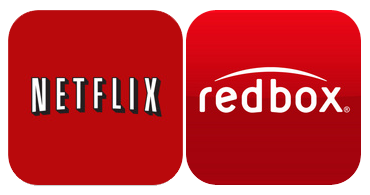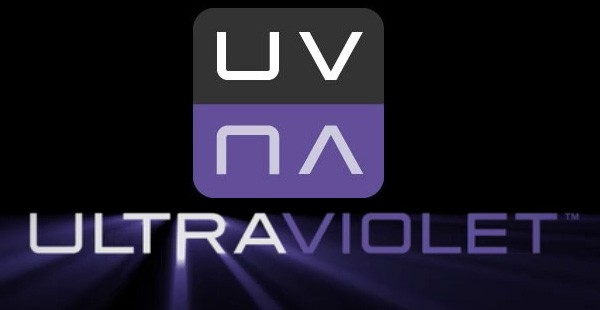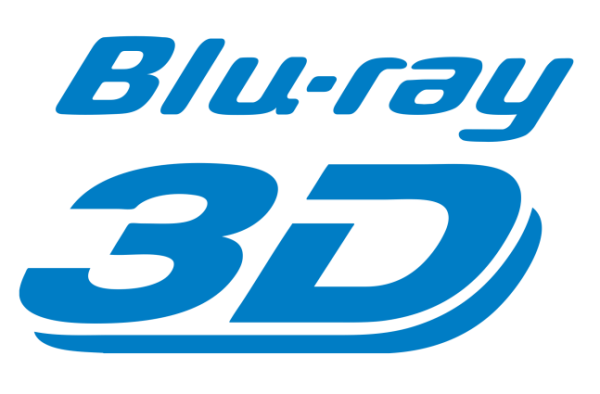Cinavia DRM: How I Learned to Stop Worrying and Love Blu-ray’s Self-Destruction
by Ganesh T S on March 21, 2012 11:00 AM EST- Posted in
- Home Theater
- Blu-Ray
- DRM
- Cinavia
Blu-ray Profile Updates
Despite setting out to clear the air about Cinavia in today's piece, we will also take the opportunity to provide a few comments on how the BDA is insulting the intelligence of the consumers. When Blu-ray Profile 1.0 was released, it imitated the tried and tested DVD menu system. By getting access to a simple menu interface to choose the audio and video tracks (theatrical or director's cut, for example), consumers were able to easily identify and adopt Blu-rays as the successor to DVDs for high definition content. Rarely used DVD features such as multiple viewing angles were rightly ignored by most of the initial Blu-rays.
The Blu-ray industry, in trying to make Blu-rays more attractive to the consumers, brought about BonusView (Picture-in-Picture) in a profile update in November 2007. With its usefulness as a medium for commentary tracks, it did solve an existing problem. However, subsequent profile updates haven't caught the imagination of the consumers. While the BD-Live (Profile 2.0) features are an inexcusable addition, Blu-ray 3D is at least acceptable because of the big push given by the studios for theatrical screenings in 3D.
As a tech journalist, I spend countless hours browsing public forums such as Doom9, AVSForum and VideoHelp to gauge public opinion about various topics in my area of coverage. I haven't seen a single post in praise of BD-Live. I have seen BD-Live in action on various discs, and they bring one or more of the following features to the consumers:
- Push the trailers of the studios' latest movies to the consumer: Why do studios think that a Blu-ray in the retail market is an advertising medium for future use? In addition, trailers are also forced before the main movie (and it is not clear if BD-Live can deliver new trailers for that segment, or whether BD-Live trailers have to be specifically requested by the users). As we mentioned earlier, consumers seem to prefer instant gratification and don't want to be forced to sit through multiple trailers in their home theater. In this situation, I find it hard to see consumers willfully going to the BD-Live section and requesting and waiting for a new trailer to download and play on their Blu-ray player.
- Downloadable games and activities realted to the movie: I have actually tried a few of these games, and my belief is that most Blu-ray remotes are ill-suited to these types of activities. With the rise of social networks with gaming apps, there are multiple available alternatives for casual games related to most popular movies, and nearly all of them are better than BD-Live offerings.
- Chat with other fans and other social activities: Blu-ray remotes are not comfortable enough for online chatting, and the big screen doesn't really seem to be the right place for social interaction.
- Avenue for firmware updates: With Profile 2.0 making it compulsory for players to have an Ethernet port connected to the Internet, it has become a convenient excuse for the Blu-ray industry to release discs which don't play on units with older firmwares. Requiring your player to get connected to the Internet and download a huge firmware update just to play back one's latest Blu-ray purchase is definitely one item encouraging people to 'pirate' movies.
Some of the Profile 5.0 Blu-rays (3D) often refuse to play in 2D on older profile players. This type of mess-up often leads to consumer frustration.
Despite the studios putting lots of money and effort into promoting 3D, it doesn't seem to have taken off as much as expected.
Blu-ray Rentals
Retail Blu-rays and rental Blu-rays (from services such as Netflix and RedBox) for a particular movie title are not the same. Last year, I had the opportunity to see the movie Rango in the theater. When the Blu-ray released, I found out that it contained two cuts (one theatrical, and the other, extended). I also found that my nearby RedBox kiosk had the Blu-ray version available for rental. Upon renting the movie (the RedBox movies come in a non-descript box), I found that the rental Blu-ray contained only the theatrical version. I am sure I am not alone in feeling frustrated by this type of treatment from the studios.

Providing separate versions of the masters for the rental and retail Blu-rays is okay as long as information is provided upfront. However, sweeping this under the carpet like what is being done now only increases the consumers' ill-feelings towards the Blu-ray industry.
UltraViolet : Blu-ray in the Cloud
The Blu-ray industry's move into online streaming with UltraViolet has also got off to a disastrous start, with Walmart now being roped in to help salvage the initiative. Vudu (owned by Walmart) is trying to help the UltraViolet consortium by becoming a player / source of UV copies in the cloud . However, it is not clear how and why studios expect consumers to pony up money again for content that they have already paid for. StreamingMedia's blog piece and CNET's op-ed both carry very convincing arguments about how the UV initiative is completely loaded against the consumers.

The aim of UltraViolet is to currently provide users with a copy of the movie in the cloud, though the initiative also provides for downloadable copies. As of today, it is easier for users to strip the DRM, rip and re-encode their purchased Blu-ray movies into any format they wish. Can the UV initiative provide something easier to use? While the Blu-ray industry tries to solve the problem, let us provide you with a few tips on getting the most out of the money spent on your Blu-ray collection.












121 Comments
View All Comments
colonelciller - Wednesday, March 28, 2012 - link
wow that's lame... the industry is totally out of touch with reality aren't theyGuspaz - Wednesday, March 21, 2012 - link
But they make it impossible for me.Say I want to buy a movie or TV series. If I buy it on BluRay, I can't watch it on my iPad. If I buy it on iTunes, I can't watch it on my preferred PC player or TV (not without buying an Apple TV), and it costs twice as much as the bluray.
Meanwhile, if I were to download a torrent of the movie or TV episode, it plays on my TV, it plays on my computer, it is easily transcodable or remuxable to my iPad, and there is no DRM hassle whatsoever.
About the only bright spot in all this is Netflix, where the DRM simply isn't a problem by virtue of being completely transparent, and having clients for every conceivable device I'd want to watch it on. The problem is that I can't get all my content through Netflix, as much as I'd like to.
The music industry FINALLY got a clue, and at this point they begrudgingly sell their content DRM-free at reasonable prices. The current road the television and movie industries are on ends in a cliff.
colonelciller - Wednesday, March 28, 2012 - link
I agree with the music industry getting a clue finally with the DRM-free... but as for reasonable prices I'd have to disagree wholehartedly.IF... they were selling songs for about 90 cents each for CD quality FLAC or Apple Lossless then ok... but for the compressed mp3 format then the only price I'D pay is about 2cents per song.
I didn't invest in a hi-fi stereo to play crappy mp3 files
arjuna1 - Wednesday, March 21, 2012 - link
Yet another department where pirates get better service than paying customers.Gotta love the entertainment industry.
mindbomb - Wednesday, March 21, 2012 - link
it actually seems alright from what's presented in this article.Are they encoding from a lossless master, or do they just simply use blurays?
ganeshts - Wednesday, March 21, 2012 - link
Quality wise, it is pretty good. However, it still comes bundled with all the Blu-ray issues.. You can rent and watch it on a device but it comes with issues such as a 24 or 48 hour watch window. If you buy it, the purchased copy which is downloaded can only be played on that particular device / still bundled with DRM.I will ping Vudu PR about the details of the encoding process they are using (after our AppleTV 3 review is up, because it has some relevant details I would like to point out to their PR).
deva - Wednesday, March 21, 2012 - link
I can't help but think that the use of fancy DRM features by content has to be an element of the following:Senior Exec: "WE NEED TO PROTECT OUR CONTENT, WHY AREN'T WE DOING MORE TO PROTECT OUR CONTENT!?"
Engineer: "Yes sir, right away sir. There is this lovely new DRM produced by 'company x' that will protect our content to a high level....."
Senior Exec: "Excellent work young engineer. You're in line for a promotion for such innovation and forward thinking."
I hope my point come through OK. In all industries, in my experience there tends to be a fair bit of 'management appeasement' which can lead to poor choices being seen as great ones.
Zoomer - Wednesday, March 21, 2012 - link
The engineers don't care; their product experience isn't really that impacted by all that crap. Which they bypass.colonelciller - Wednesday, March 28, 2012 - link
I'd bet you that the guys who make these systems never actually have to tolerate these systems when they are at home watching a movie from their own collectionarcher75 - Wednesday, March 21, 2012 - link
Streaming doesn't work for me. The quality is poor, even on FIOS and there is no HD audio. Luckily I have no bandwidth caps but most do.So once quality improves and HD audio is included i'm on board. Until then i'll happily stick with discs.